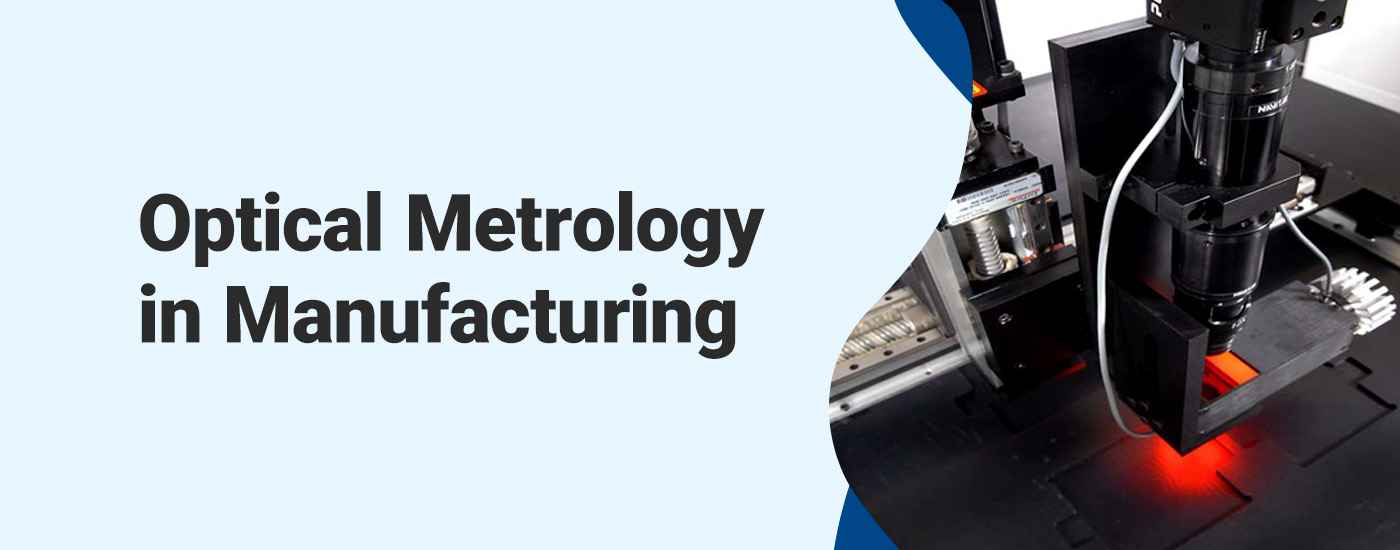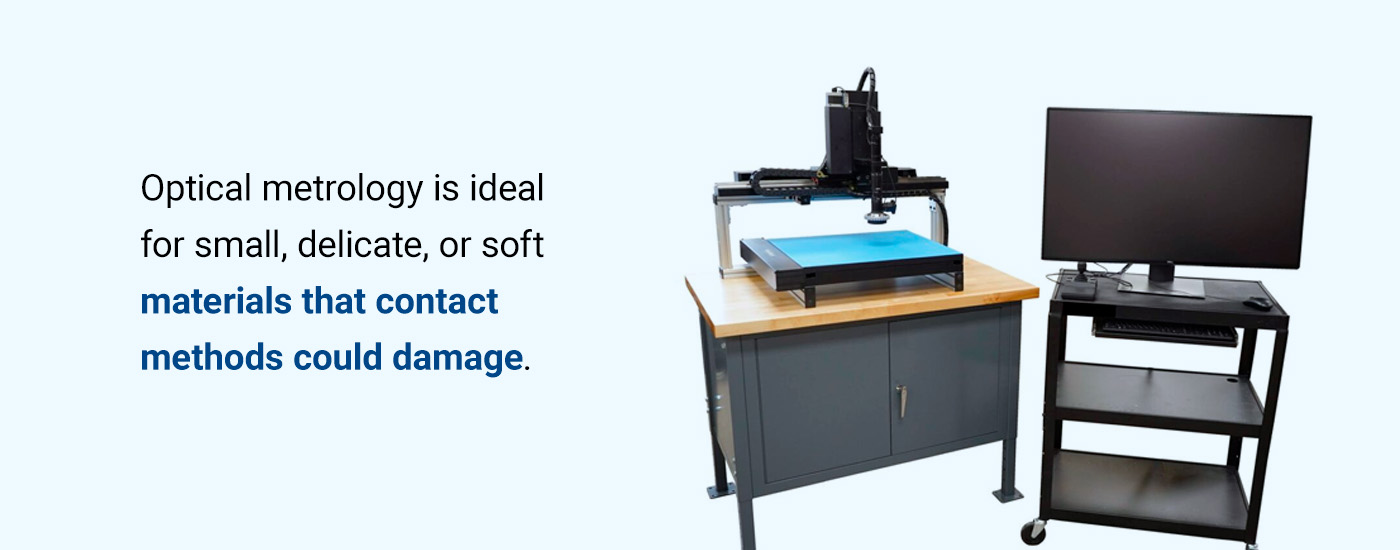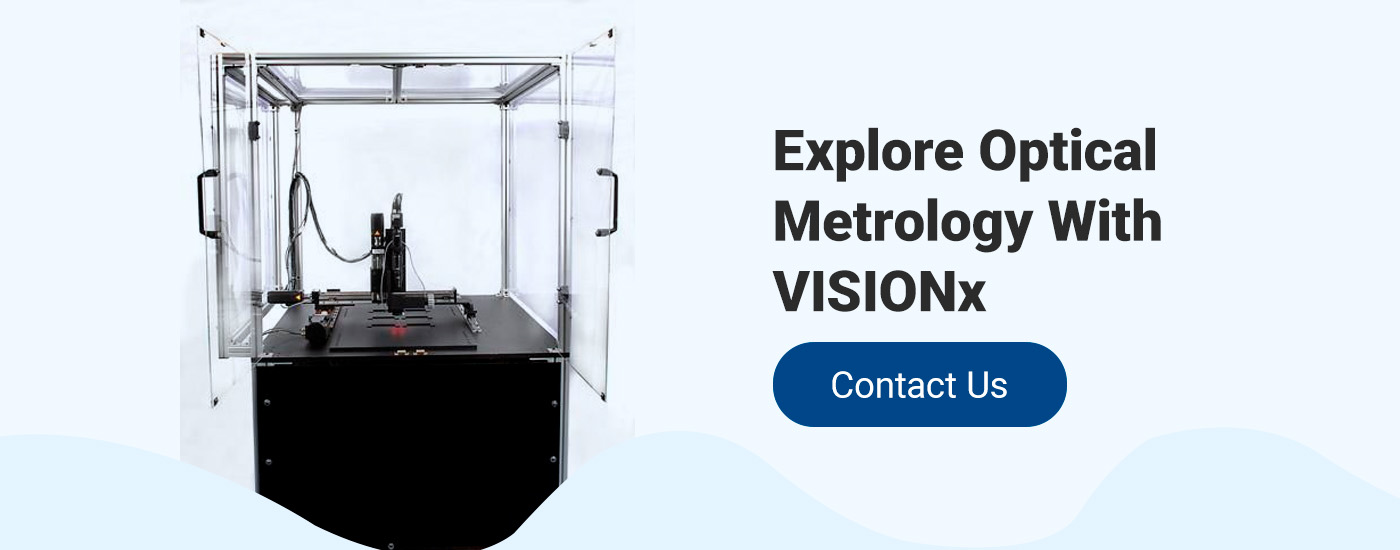
Modern manufacturing relies on precision to deliver high-quality products at efficient speeds. In industries like aerospace, automotive, and medical devices, your operation needs to meet extremely tight tolerance ranges while remaining productive. How do you stay competitive and precise with such rigid requirements?
Manufacturers need advanced inspection methods to meet changing quality and compliance standards. Optical metrology is a noncontact solution that delivers high speeds and precision. Using these tools, you can achieve the accuracy, quality control, and efficiency needed to stand out in manufacturing.
What Is Optical Metrology?
Optical metrology is a relatively new measuring technique manufacturers can use to analyze an object without touching it. Traditional inspection tools require contact to work, which can affect fragile parts. Instead, optical metrology’s noncontact nature lets manufacturers easily measure complex or delicate components.
Manufacturers can use this technique to improve quality control, ensure compliance, and qualify processes. Noncontact metrology methods work faster and more accurately, reducing production costs and delays. Your business can consistently test products without compromising their quality — critical for the medical devices and aerospace sectors, which have strict deadlines and standards.
How Does Optical Metrology Work?
Optical metrology uses automated imaging to capture visual data. The imaging system uses lenses, sensors, and illumination to take high-resolution images without touching the part. As the sensors scan the illuminated areas, they record dimensions and features.
Once the device takes the images, a computer-aided design (CAD) system analyzes them. The system compares the images to reference models, pointing out deviations from specifications. Manufacturers get precise analysis and accurate imaging for faster, more reliable quality assurance.
Types of Optical Measuring Devices
Noncontact measurement systems are essential to successful modern manufacturing quality control. Here are some of the systems used in optical metrology:
- Digital optical comparators: The VisionGauge® Digital Optical Comparator is a leading optical solution. It offers automated, high-accuracy comparisons of parts directly with CAD models and other reference standards. Enjoy faster, more consistent inspections with minimal operator input.
- Automated optical inspection (AOI) systems: AOI systems automatically detect defects and provide high-speed, high-resolution part verification.
- Field-of-view inspection systems: These systems use specialized optics to measure parts within a single view. Use them for small, intricate components.
- Multi-camera vision systems: Multi-camera models give you multiple part perspectives. Get comprehensive part inspection without any repositioning.
Advantages and Considerations of Optical Measuring Systems
If you’re looking for better precision and efficiency in your quality control, optical metrology can help. Manufacturers looking for advanced quality control tools should consider optical metrology for their operations. However, like any equipment, these systems have benefits and potential drawbacks.
Advantages
Some of the highlights of optical metrology software and equipment include:

- Noncontact measurement: Optical metrology inspects parts without touching them. It’s ideal for small, delicate, or soft materials that contact methods could damage.
- High accuracy and precision: Advanced imaging systems detect the smallest deviations from nominal values, resulting in higher degrees of reliability and accuracy in your inspection process.
- Versatile: These systems are highly versatile. They can measure complex shapes and intricate parts across industries, including large parts and assemblies. They can also have mobile configurations and can be brought to the item, saving time and effort.
- High speed and efficiency: Automated optical systems are extremely fast and efficient. They rapidly inspect parts, reducing inspection times while boosting production.
- Real-time data: Manufacturers get instant feedback with optical metrology. You can immediately identify noncompliant parts, correcting manufacturing issues faster than traditional methods.
- Reduced errors: Automation minimizes human error. Since the system delivers repeatable results, your operation will see more consistent quality control and fewer errors.
Considerations
While there are many benefits to optical metrology, there are some drawbacks to consider, including:
- Initial costs: High-precision optical systems often come with high initial costs. However, the long-term efficiency and productivity gains often offset these costs.
- Limitations: Some optical metrology systems can struggle with certain types of part surfaces while others perform very well. Specialized illumination options may be required to resolve this in a multi-faceted system.
- Sensitivity: External factors can affect performance. Lighting conditions, ambient contamination, and vibrations may need to be controlled to avoid impacting measurement accuracy.
Optical Metrology Manufacturing Applications
Optical metrology is making waves in industries and applications, prioritizing efficiency. The noncontact, automated technology helps meet advanced quality standards while keeping manufacturing moving. Here are some areas where optical metrology performs best:
High Accuracy Measurement Solutions
High-accuracy industries like aerospace, automotive, and semiconductors rely on optical metrology for its quality. These sectors produce complex parts with tight tolerance ranges. Manual inspection tools may lack the consistency optical noncontact methods offer.
In automotive work, optical metrology ensures engine components meet design specifications. With automated systems checking each part, these companies see improved quality control and process yield, which increases brand reputation and product performance. Similarly, semiconductor manufacturing can use this technology for inspecting the smallest details. Surface defects and chip dimensions are easily spotted with direct comparisons to CAD models.
Automated Inspection Techniques
Optical metrology’s automation offers manufacturing a way to improve the inspection process. CAD-based simulations and automated technology deliver inspections without manual support. Automated analysis provides businesses with:
- Faster inspection cycles
- Consistent results
- Reduced costs
Since the system operates the inspection on its own, manufacturers can reduce human labor and push through products faster without compromising quality. The technology is highly accurate, checking quality standards uniformly. As a result, you can generate less waste and higher production speeds while meeting industry regulations.
Why Trust Us?
VISIONx, Inc. is your trusted partner in accurate, tailored optical solutions. Our advanced optical inspection and measurement systems are backed by patented technology and decades of experience. We prioritize accuracy, automation, and easy use with all our products.
We work closely with you from the initial consultation to implementation, ensuring optimal performance. With VISIONx, Inc., you gain access to independent inspection and industry-leading accuracy and reporting. We’re committed to quality and compliance. VISIONx, Inc. adheres to ISO 10360 standards for coordinate measurement machine accuracy. Our systems are NIST- and ISO-traceable, with every calibration backed by detailed certification and historical records. You can trust our team to ensure precision and regulatory compliance for all your quality control needs.
Explore Optical Metrology With VISIONx
Experience cutting-edge optical inspection with VISIONx, Inc.’s VisionGauge® systems. Our products deliver fast, operator-independent inspections directly on the floor, helping you meet the tightest industry standards. You can enjoy easy CAD integration, patented CAD Auto-Align™ and CAD Auto-Pass/Fail™ technologies, and advanced reporting features with our solutions.
Looking for custom solutions? Our in-house capabilities are built to support your unique requirements. From software development to 3D design, machining, and fabrication, we handle nearly every aspect of production. With state-of-the-art facilities and unmatched expertise, we deliver fully customized solutions as needed.
Contact us today to learn how our VisionGauge® systems can support your success.
